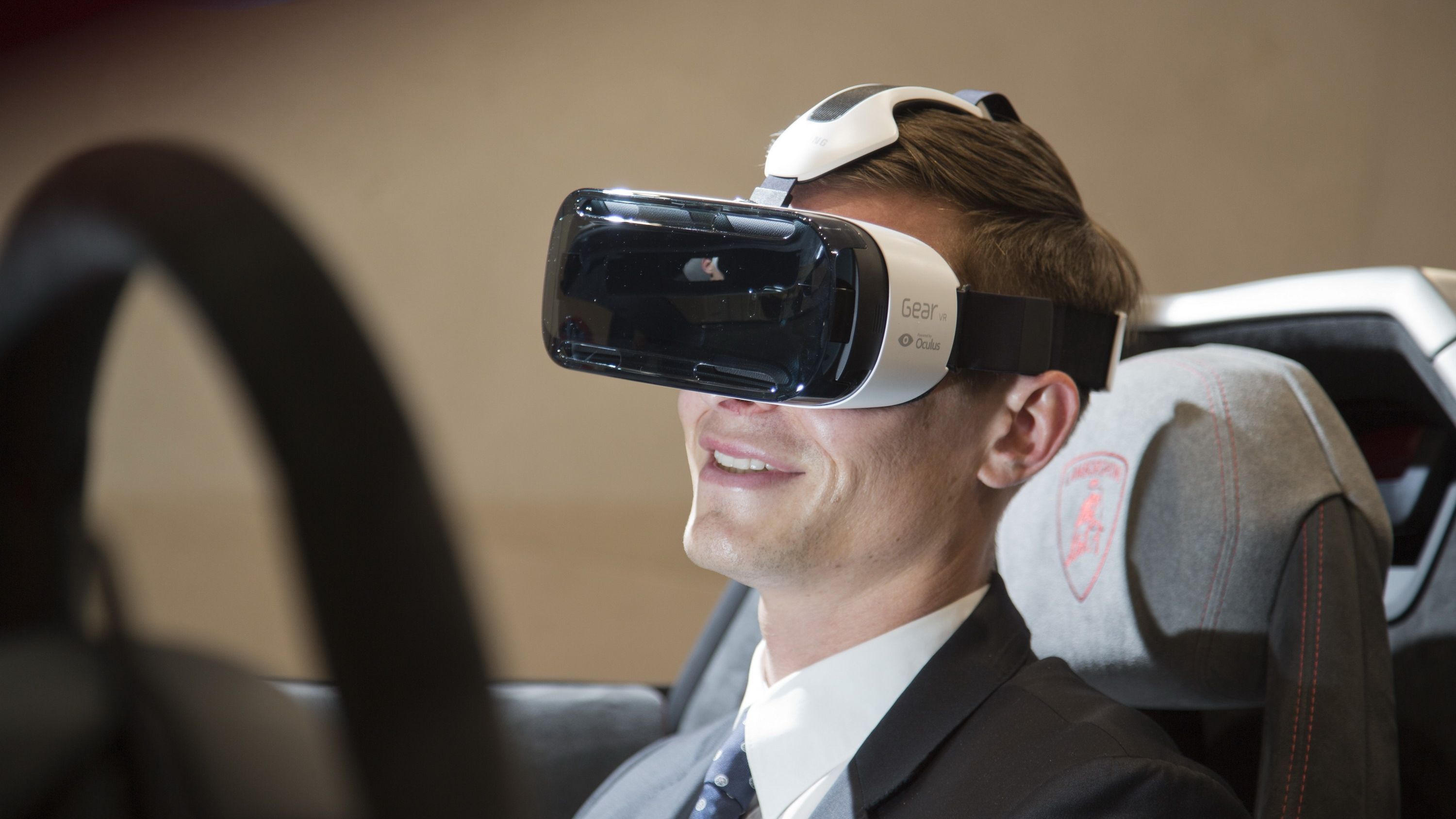Nowadays, finding speed in the real world often starts in the virtual one. Pro racing teams are spending huge sums to create super-accurate simulators that allow drivers to practice, engineers to analyze, and accountants to save bucks on tires and fuel. It’s all very cool tech, and thankfully, it’s trickling down to folks like us.
In fact, virtual reality is getting so good we can now get a small taste of the simulated rich life simply by throwing on a pair of goggles. To help promote this concept, Samsung and Lamborghini->ke44 teamed up to give attendees at the 2015 Geneva International Motor Show->ke228 a chance to sample the Huracán->ke4345 on the road and track.
Using a VR headset visor with Oculus technology, participants are given the choice of three different experiences: Sport, where the supercar->ke177 is taken along the scenic cliff edge of the Amalfi Coast; Strada, which plots a route through the town of Amalfi; and Corsa, where every ounce of raging-bull performance is unleashed on the Imola racing circuit.
Looks like fun, but I’m still waiting for the full-blown rich-guy simulator. You know, the one with the multi-million dollar villas and supermodel yacht parties.
Continue reading to learn more about Lamborghini's new Virtual Driving Experience.
Why it matters
Slowly but surely, virtual reality is seeping into our actual reality. The ones and zeroes of the computer-generated world offer a number of benefits, including lower operating costs, expanded accessibility, and safety. The opportunity to blast up a picturesque Italian coastline in a $365,693 supercar is not exactly handed out with every Costco membership, but with an outlay of a couple hundred bucks for some decent VR equipment, it’s the kind of experience anyone can have (or at least simulate).
Is this good? Bad? Does it even matter? Personally, I welcome this new tech with open arms. While the exact spot where the “real” and “unreal” meet will continue to blur, I’m content to enjoy the ride, but it'll never replace time spent on the throttle in real life.
2015 Lamborghini Huracán LP 610-4
As a replacement for the revered entry-level Gallardo, the Huracán made its first public debut at last year’s Geneva Motor Show. While not the most outrageous-looking Lambo ever created, the Huracán is still aggressive, with large air intakes, sharp creases, and pronounced aerodynamic features from front to back. Lighting with Y-shaped LEDs can be found in the nose and tail.
The interior offers a redesigned dash, carbon fiber and Alcantara surfaces, and a center console with a 12.3-inch TFT screen and jet fighter-esque buttons and switches. It’s the kind of place you can comfortably call a “cockpit” without exaggeration.
Making the power is an updated version of the Gallardo’s 5.2-liter V-10 powerplant, which produces 610 horsepower at 8,250 and 413 pound-feet of torque at 6,500 rpm. Acceleration figures are 3.2 seconds to 62 mph, 9.9 seconds to 124 mph, and a top speed in excess of 202 mph.
Traction comes from an AWD system fed by a seven-speed dual-clutch gearbox. Three different drive modes, Sport, Strada and Corsa, adjust the settings for the transmission, suspension, steering, exhaust, and stability control, depending on whether you’re twisting along the edge of the Gulf of Salerno, cruising through a coastal tourist town or vying for the fastest lap time against a Ferrari competitor.
Pricing starts at $237,250.

